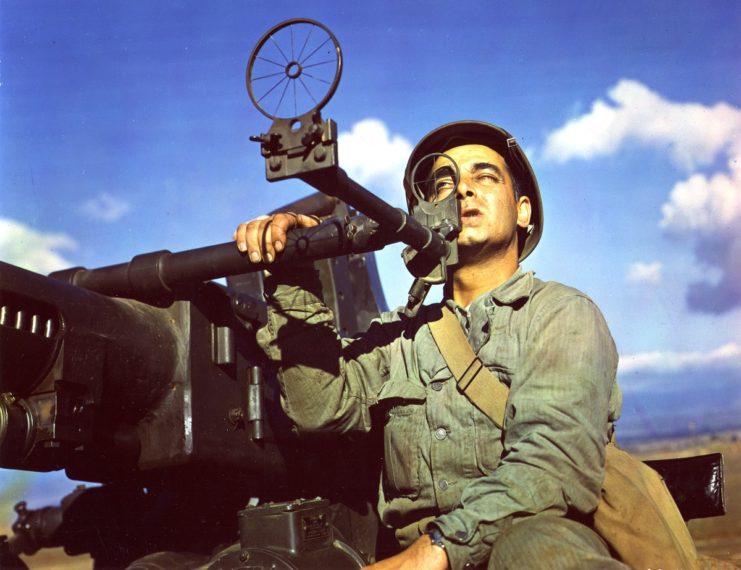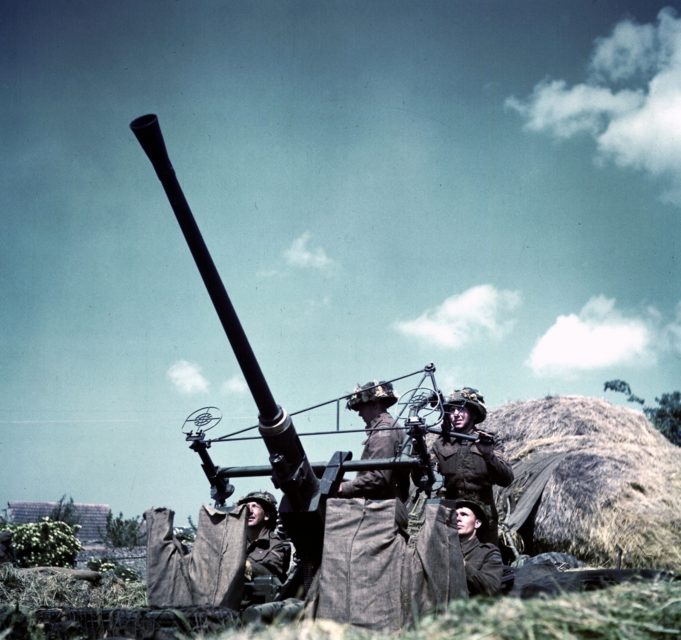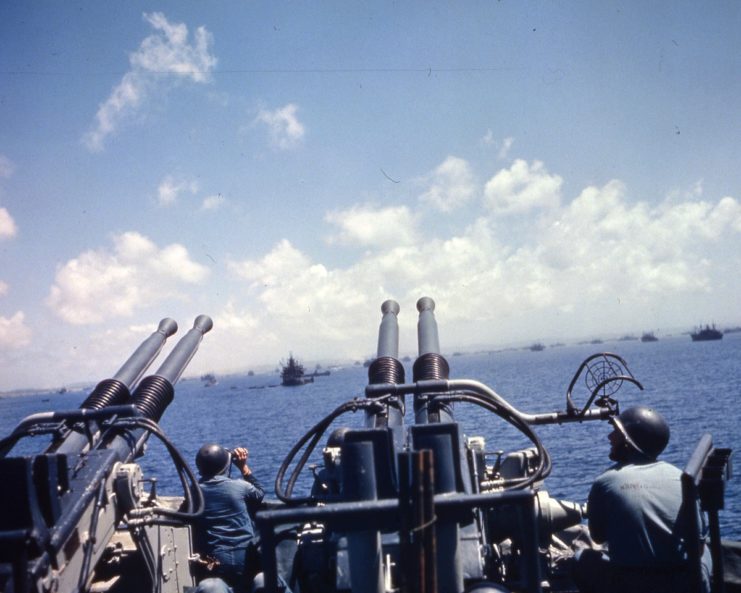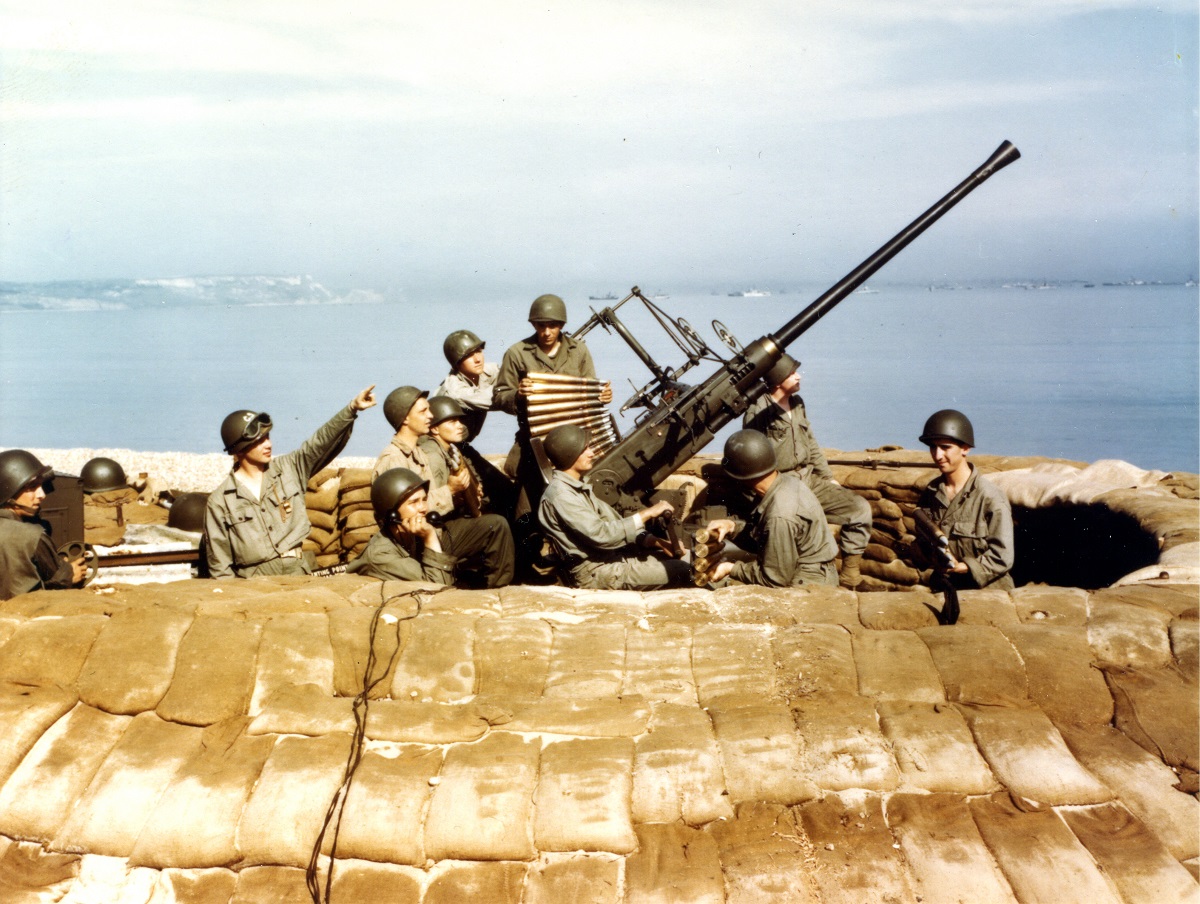The job of an anti-aircraft gun is surprisingly demanding. It must be able to destroy or deter a fast-moving target by aiming not where it is, but where it will eventually be, depending on many factors. High-speed aircraft, when first introduced, were small targets and were incredibly hard to hit with accurate fire before the introduction of guided missiles. Anti-aircraft guns when first introduced didn’t focus on hitting aircraft with precise accuracy and instead relied on sheer volume to bring down planes. This was the case with the Bofors 40 mm, which was designed in the 1930s and is so effective that it is still in use today.
Although this gun is often seen in WWII images and films in British and American service, neither of these countries actually designed it. That distinction goes to Sweden, which, ironically, was a neutral country during the conflict.
Development

In the early 1920s, Sweden’s Navy desired a more capable replacement for their Vickers Pom-Pom anti-aircraft guns. The navy handed this request over to Bofors, who entered into a contract in 1928. Soon into this new weapon’s development, Bofors encountered problems with its cycling. Compared to most fast-firing weapons, this design used a much larger 40 mm round. Any system that was capable of handling the forces involved with such rounds was also too heavy to fire quickly.
After a few changes were made to the feed mechanism in 1930 the weapon began to fire at an acceptable rate. Interestingly, around this time Krupp (the major German industrial company that produced tanks, guns, battleships, and U-boats for Nazi Germany during WWII) purchased a one-third share of Bofors. Fortunately, Bofors kept their new anti-aircraft weapon a secret.
The weapon was ready for production by 1933.
The result was an anti-aircraft gun that could fire 900-gram high-explosive shells to a maximum of 23,600 ft. Its real word maximum was around 12,500 ft. The gun operated on a gravity-assisted feeding mechanism that was loaded with four round clips by hand and could achieve a maximum rate of fire of 120 rounds per minute.
Usage

By the time it was completed the Swedish Navy was no longer the only ones wanting to use the weapon. The Dutch Navy was one of the first to order in the Bofors 40 mm, placing five twin-gun mounts on the cruiser De Ruyter in the mid-1930s. Soon, many more nations wanted the anti-aircraft gun, especially after Bofors unveiled a towed version in 1935.
The British inspected the system in 1937, made a few changes, and began building it themselves under license, where it was called the “QF 40 mm Mark I.” After having difficulty laying the weapon on particularly fast-moving aircraft, the British added the Kerrison Director mechanical analog computer, which electronically aimed the gun. While this system was a remarkable piece of engineering, it proved to be impractical in combat, and it was eventually replaced by a much simpler system.
The British held the gun in extremely high regard and put a massive emphasis on its production during the war. In fact, Commonwealth factories produced over 19,000 Bofors 40 mm guns. The gun could be mounted on any platform it could fit, like tanks and even civilian trucks. Both the British Army and Navy made extensive use of the Bofors. During D-Day, Bofors guns were vital in protecting newly captured areas, with crews from the Light Anti-Aircraft Regiment, Royal Artillery shooting down 17 enemy aircraft over the Orne River in France.

During the war they were also used as signaling tools, firing color-coded tracers over safe areas of minefields and indicating the directions of enemy movements.
The weapon also holds the title of being the first ground-based anti-aircraft weapon to shoot down a jet aircraft – in this case, it was a German Me 262.
The US was a major manufacturer of the weapon, with the Army and Navy needing large numbers of them. To fulfill these orders production was given to Chrysler. The process of manufacturing the weapon on a large scale was difficult, as the drawings were in Swedish and the dimensions were in metric. Chrysler made changes to the gun’s manufacturing methods to make it faster and easier to build, cutting its original projected production time in half. As a result, Chrysler built a staggering 60,000 guns and 120,000 barrels.
In 1940 the US Navy was shown a demonstration of the weapon, and they knew such a weapon would be extremely useful. However, during the discussions that sought to give the Navy a license to produce the weapon, Sweden requested that the US give them the manufacturing licenses for aircraft in return. The Navy declined, and supposedly, secretly acquired imperial drawings from the British. With these, they started building guns illegally. An official deal was made with Bofors in 1941.
The gun was in such demand that even Germany and Japan operated captured versions.
After the war, the gun remained both in production and in use, with twin mounted guns finding themselves in the M42 Duster self-propelled anti-aircraft gun. One of their more notable roles was aboard AC-130 gunships.
Even today, modernized versions of the Bofors 40 mm gun are still in production.
